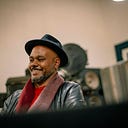The Water Cycle
The Water Cycle is a research and experimentation project about the properties and behaviors of the digital medium. It interrogates the dominant metaphors that guide the design and creative uses of software by exploring the fluidity, circularity, and invisibility of digital communications.
Metaphors matter. They shape and control the ways in which we think about the world, how we perceive and in turn construct our realities. The digital medium, because of its infancy, is still mostly defined according to legacy concepts from previous dominant media such as books, newspapers, or film. We speak of web pages and bookmarks, but our days are spent looking at timelines. We use paper clip and camera icons to refer to actions taken by numbers. We speak about phones and clouds, but we are only connected to computers. We need new metaphors.
The Water Cycle thinks about the digital as a shapeless liquid substance, like water. It adopts several processes of the hydrological cycle as guiding metaphors for a transformation of digital media content. Infiltration, evaporation, condensation and precipitation are some of the key concepts used to explore the potential of networked software and the idea of invisible communications. Digital media flows, it crashes, it disappears. Its shape is defined by whatever device or environment it happens to be in. It is made by people, places, and machines.
The project makes use of various online applications to produce, publish and transform sounds, words, and images. It then generates a circular flow of content that moves through the internet, evolving, mutating and being affected by external conditions such as location or the weather. Through the use of social media, algorithms and human input, a story is told about the transitions and the meanings of our creative expression. The Water Cycle is a method of visualizing flows, a strategy for generating ideas, a narrative device that speaks through code.
What happens between and behind the clicking of buttons, the flickering of screens, the transmission of messages across the network? How can cities provide the geographical and cultural background for the unfolding of semi-autonomous media streams? Where are the gaps in the digital universe and why do we need them?
Process:
The cycle begins with the weather. An algorithm is set up to look for temperature fluctuations and other climate changes in Lisbon, and to publish them on the web. These events trigger a search in major European newspapers for any news about the city. Add sound: when someone uploads a track that is connected to the city, that audio enters the cycle. A tweet is sent out with a specific hashtag, which in turn activates a search for geo-tagged images.
Those images are sent by email to five recipients. One of them goes on the dark web and posts the image on an invisible forum, generating tags that are sent as a reply. Those tags become tweets which then become search terms for relevant videos. They provide the context for an interview, a text, a live radio broadcast. It’s raining in Lisbon, the cycle begins again.
Resources:
water.stress.fm, Tor, Tumblr, Soundcloud, Twitter, Yahoo! Pipes, If This Then That, Blogger, Facebook, Evernote, Instagram, Flickr, Gmail, BBC Weather Services, Yahoo! Finance, RSS, Delicious, YouTube, Samsung Galaxy S III, Zoom H1 voice recorder, Nikon D5100, Asus laptop.
References:
Adams, P. “Design Futures 1: Creating Systems Not Destinations”. Intercom2014.http://blog.intercom.io/design-futures-1-creating-systems-not-products/
Adams, P. “The End of Apps as We Know Them”. Intercom 2014.http://blog.intercom.io/the-end-of-apps-as-we-know-them/
Arnall, T. “Revealing Reality.” Talk delivered at Improving Reality, Lighthouse. Brighton Dome Studio Theatre 5 September 2013. http://www.youtube.com/watch?feature=player_embedded&v=nr78tQd82Nk
Bratton, B. “The Black Stack.” E-flux Journal #53 March 2014. http://www.e-flux.com/journal/the-black-stack/
Dodge, M. and Kitchin, R. 2011. Code/Space: Software and Everyday Life. Cambridge, MA: The MIT Press.
Fluid mechanics. http://en.wikipedia.org/wiki/Fluid_mechanics
Gelernter, D. “The End of the Web, Search, and Computer as We Know It”. Wired 3 February 2013.http://www.wired.com/2013/02/the-end-of-the-web-computers-and-search-as-we-know-it/
“Invisible Fields”. Exhibition. 14 October 2011–4 March 2012.Lighthouse http://www.lighthouse.org.uk/programme/invisible-fields
Johnson, M. and Lakoff, G. 1980. Metaphors We Live By. Chicago: The University of Chicago Press.
MacKenzie, A. “Wirelessness as Experience of Transition”. The Fibreculture Journal issue 13, 2008.http://thirteen.fibreculturejournal.org/fcj-085-wirelessness-as-experience-of-transition/
Manovich, L. “Media After Software.” Software Studies November 2012.http://softwarestudies.com/cultural_analytics/Manovich.Media_after_software.2012.pdf
Manovich, L. “Software is the Message.” Journal of Visual Culture Forthcoming Spring 2014.http://lab.softwarestudies.com/2013/12/software-is-message-new-mini-article.html
Mitchell, W. 2004. Me++: The Cyborg Self and the Networked City. Cambridge, MA: The MIT Press.
Murray, J. 2011. Inventing the Medium. Cambridge, MA: The MIT Press.
Sorgatz, R. “Surfing, Drowning, Diving: A Brief History of Inventing New Media”. Medium, 12 November 2014. https://medium.com/message/surfing-drowning-diving-122612314fa8
Terranova, T. “Free Labor: Producing Culture for the Digital Economy.” Electronic Book Review 20 June 2003.http://www.electronicbookreview.com/thread/technocapitalism/voluntary
Water cycle. http://en.wikipedia.org/wiki/Water_cycle
Originally published at chumbo.org on March 3, 2016.
